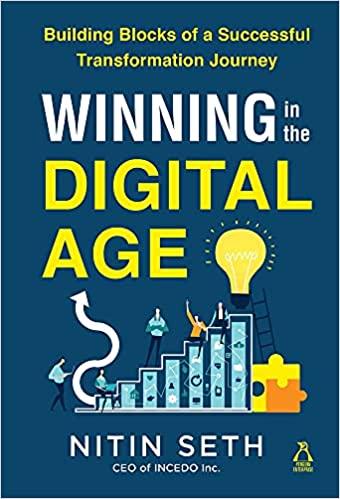Becoming a successful digital-age firm requires undertaking a challenging set of positive actions that include instilling throughout the firm the primacy of customer value, delivering products and services that do indeed add more customer value, organizing work in self-organizing teams, operating as an interactive network of competence, developing a capacity to systematically create new businesses; managing data as an asset; and mastering ecosystems and platforms.
Yet often the hardest part of the journey towards becoming a digital-age winner is often getting free from legacy processes and systems that slow down or even prevent these positive steps being taken. Ironically, digital technology can be both the main enabler and the top constraint.
Industrial-Era Baggage
Most firms undertaking a digital transformation need to get free from industrial-era business models and processes, so that they can do more than dabble in digital innovation on the side. Firms need to halt strategy work that is not leading to a digital-age future, even where the work is being done at a high level in the organization. They need to stop work on innovation plans that are not centered on customer needs and are merely innovation theater. If the ideas generated by large-scale hackathons usually end up going nowhere, then hackathons themselves need to be put on hold, so that priority can be given to more effective ways of generating innovation, such as regular value-creation forums. Huge resources spent on annual budget exercises are usually exactly that—exercises— in which defensive tactics by each unit result in little-to-no change from last year. Another frequent source of waste comprises enterprise-wide communication programs that are often a form of kabuki theater aimed at distracting from real issues: theymust be stopped. Massive systems of KPIs and OKRs are not only unproductive but also used to justify other unproductive work. HR processes that support the status quo must be transformed into value-adding work that enhances and enables talent: in the digital age, strategy drives talent and not vice versa.
Why don’t CEOs solve these problems? If the recent Harvard Business School study of what CEOs actually do with their time is accurate, CEOs are usually too busy dealing with the multiplicity of short-term issues to deal with systemic problems.

Instead, according to the survey, CEOs are preoccupied with administering the current business operations. The CEOs have “vast, encompassing functional agendas, business unit agendas, multiple organizational levels, and myriad external issues.” Their work “involves a wide array of constituencies—shareholders, customers, employees, the board, the media, government, community organizations, and more. Unlike any other executive, the CEO has to engage with them all…. CEOs remain accountable for all the work of their organizations.”
MORE FROMFORBES ADVISORBest Travel Insurance Companies
ByAmy DaniseEditorBest Covid-19 Travel Insurance Plans
ByAmy DaniseEditorThe road map for moving towards the digital age for these CEOs isn’t central: if it exists at all, it’s just one of a huge number of things that CEOs have to attend to. In fact, the C-suite is often generously compensated for keeping things the same. Meeting short-term financial targets often trumps everything else.
The Hardest Part: Legacy IT Systems
Yet the hardest part of the digital-transformation joustney is often something unexpected. Although, as Microsoft CEO Satya Nadella noted earlier this week. “digital technology is the most malleable resource at the world's disposal,” paradoxically digital technology can itself be the most intractable constraint to change.
That’s because many big old firms have inherited monolithic IT systems that are themselves very difficult and costly to change. These systems, which may have been built more than 20 years ago, have become labyrinths of complexity, with layer-upon-layer of customization, without regard to the need for future change. In such complex monolithic computer systems, any code change can affect the whole system so that components cannot be scaled or changed independently. It is also problematic to apply a new technology because here too the entire system may have to be rewritten. Sometimes the technical expertise to manage these systems lies outside the firm with external vendors.
Top-level executives themselves have often played a role in creating some of the problems, issuing directives to implement instantaneous fixes to solve urgent problems, without recognizing the buildup of technical debt that eventually will have to be repaid.
For firms to be effective in the digital age, and take advantage of the dazzling new technologies, they need to make a fundamental shift in design from monolithic systems to micro-services— distributed sets of granular applications and services, managed by cross-functional teams rather than the IT department alone. Because most companies do not have the appetite (or the budget) to fully replace their legacy systems, many firms have opted for an incremental and iterative approach to moving towards micro-services.
As one telecom Chief Information Officer explained in a recent McKinsey article, “We are building a complete, end-to-end, micro-service-based environment for one of our independent and small brands. If it proves stable and performs well, then we will move forward with developing more… We’re moving step by step. It’s not going to be some big move that paralyzes the business.”
This in turn involves new ways of working. Vertical silos need to shift to autonomous, cross-functional teams including both business line and software developers. When successful, teams foster co-ownership and collaboration, which can accelerate the decision-making, provided that there is the necessary change in mindset.
And read also:
What The Digital Age Must Learn From Agile
Understanding The Agile Mindset









